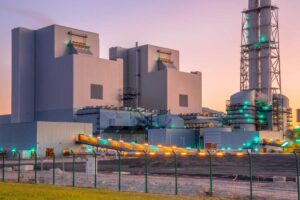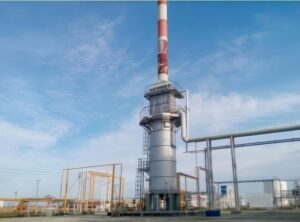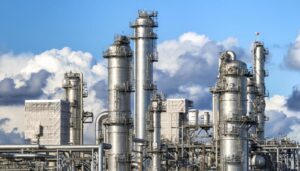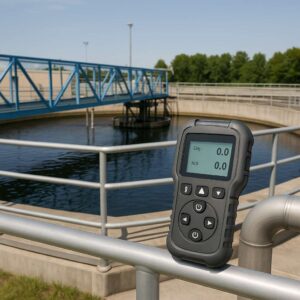Step into the world of Hydrogen Analyzers. Such devices, vital in today’s industries, will be the focus here. The aim is to delve into their function, use, and the science behind them. Together, let’s unearth the secrets of these essential tools.
Understanding Hydrogen and Its Properties!
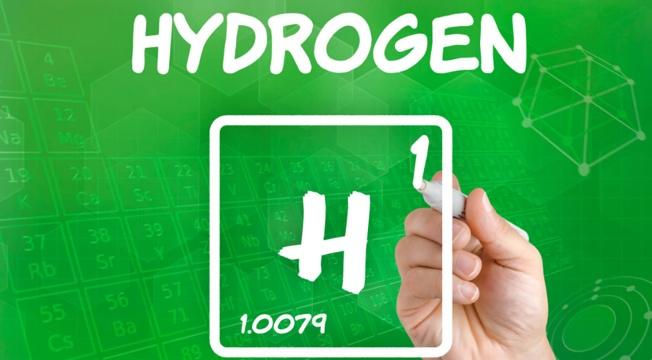
Brief Introduction to Hydrogen
Hydrogen, H2, stands as the lightest, simplest element on the periodic table. In a universe filled with stars and galaxies, it holds the title of most abundant.
Hydrogen’s abundance makes it a critical resource. Often, professionals use devices called Hydrogen Analyzers. Next, these machines measure hydrogen content.
For example, in fuel cells, petrochemical plants, or heat treatment processes, Hydrogen Analyzers provide vital readings. Notably, H2 content can drastically alter chemical reactions.
Therefore, precision matters. Overall, Hydrogen Analyzers play a key role in numerous industries.
Properties of Hydrogen Relevant to Industrial Applications
— Light Weight
Hydrogen’s featherweight stature makes it stand out. Indeed, being the lightest element gives it unique abilities, such as rising through Earth’s atmosphere.
— High Reactivity
Among all elements, hydrogen comes out as one of the most reactive. Due to its reactivity, professionals carefully monitor hydrogen levels with Hydrogen Analyzers.
— Colorless
Notably, hydrogen is colorless, making it invisible to the human eye. Hence, detectors are essential to ensure safety.
— Odorless
Like its lack of color, hydrogen is also odorless. Without smell or sight, professionals rely heavily on detection tools.
— Nonmetallic
As a nonmetal, hydrogen does not conduct heat or electricity like metals do, impacting its usage in various fields.
— Low Density
With its low density, hydrogen gas can float, relevant for applications like weather balloons.
— High Flammability
Hydrogen is highly flammable, which makes it both a source of energy and a potential hazard.
— Diatomic
Hydrogen exists as H2, or two hydrogen atoms bonded together, which influences its chemical behavior.
— Low Viscosity
With low viscosity, hydrogen can flow easily, useful in many industrial processes.
— High Diffusivity
The high diffusivity of hydrogen allows it to spread quickly, affecting its behavior in a leak or release.
— Low Solubility
Hydrogen’s low solubility means it doesn’t dissolve well in other substances, influencing its interactions.
— High Ionization
High ionization energy of hydrogen makes it less likely to lose its electron, affecting its chemical reactions.
— Low Boiling Point
With a low boiling point, hydrogen turns into a gas at very low temperatures, impacting its handling and storage.
— High Specific Heat
Hydrogen’s high specific heat allows it to absorb a lot of heat, which is beneficial in cooling applications.
The Necessity for Hydrogen Purity in Industrial Applications!
— Optimal Reactions
To ensure optimal chemical reactions, hydrogen purity is crucial. Impure hydrogen may interfere with reactions, leading to subpar results.
— Prevent Contamination
Pure hydrogen helps in avoiding contamination of the process. Contamination can cause adverse impacts on production and equipment.
— High Efficiency
In power plants, fuel cells, and refineries, high hydrogen purity results in increased efficiency. Low purity levels can hinder the performance of the system.
— Quality Assurance
High purity hydrogen guarantees product quality. Lower purity levels may lead to products failing to meet quality standards.
— Safety Standards
Pure hydrogen ensures adherence to safety standards. Impurities may cause harmful reactions, posing a risk to operational safety.
— Equipment Longevity
Equipment lifespan can extend with high purity hydrogen. The presence of impurities may accelerate wear and tear on machinery parts.
— Stable Operations
Hydrogen purity contributes to stable industrial operations. Unstable operations may occur due to impurities disrupting processes.
— Lower Maintenance
Pure hydrogen helps in reducing maintenance needs. Maintenance frequency may increase if impurities cause operational issues.
By ensuring hydrogen purity, industries can meet environmental regulations. Certain impurities might lead to environmental violations.
— Consistent Output
For consistent product output, maintaining hydrogen purity is vital. Varied outputs may arise from impurity-related process fluctuations.
— Cost Effectiveness
With fewer operational issues and reduced maintenance, hydrogen purity is cost-effective. Costs may escalate with lower purity levels due to process disruptions and increased maintenance.
— Product Purity
Hydrogen purity plays a pivotal role in maintaining product purity. Impurities in hydrogen can adversely affect final product purity.
— Energy Conservation
Efficient operations brought about by hydrogen purity help conserve energy. Energy wastage might occur due to process inefficiencies arising from impurities.
— Process Control
Hydrogen purity aids in effective process control. Lack of control may result from impurities affecting processes unpredictably.
— Reduced Downtime
Minimizing downtime is another benefit of hydrogen purity. Frequent operational disruptions, causing increased downtime, can result from impure hydrogen.
Tools and Techniques for Hydrogen Analysis!
Tools Used for Hydrogen Analysis
- Gas Chromatographs – Critical for separating and analyzing compounds that can vaporize.
- Spectrometers – Vital in determining the structure and functional groups in molecules.
- Electrochemical Cells – Fundamental in measuring concentrations of various analytes.
- Infrared Detectors – Essential in sensing specific wavelengths, important in spectroscopy.
- Mass Spectrometers – Instrumental in determining the mass-to-charge ratio of ions.
- Thermal Conductivity – Paramount in determining the heat transfer properties of gases.
- Optical Sensors – Useful in converting light rays into electronic signals.
- Trace Analyzers – Key in detecting trace levels of impurities.
- Purity Meters – Necessary for checking the purity of gases.
- Gas Analyzers – Crucial in monitoring and controlling gases in different fields.
- Paramagnetic Analyzers – Involved in measuring oxygen presence in a sample.
- Residual Gas Analyzers – Critical for measuring vacuum pressure and composition.
- Colorimetric Tubes – Handy in detecting specific gases through color changes.
- Semiconductor Sensors – Useful in detecting gases based on resistance changes.
| Tool | Function | Advantage | Typical Use | Precision | Durability |
| Gas Chromatographs | Separate & analyze compounds | High sensitivity | Lab analysis | High | Moderate |
| Spectrometers | Measure light spectrum | Broad usage range | Material analysis | Very High | Moderate |
| Electrochemical Cells | Respond to specific gas | Low cost | Indoor air quality | Moderate | Low |
| Infrared Detectors | Detect gas via infrared | Non-contact measurement | Leak detection | High | High |
| Mass Spectrometers | Identify & quantify molecules | Detailed analysis | Lab research | Very High | Moderate |
| Thermal Conductivity | Measure gas thermal conductivity | Simple, low cost | General gas analysis | Low | High |
| Optical Sensors | Detect gas via light changes | Fast response | Environmental monitoring | High | High |
| Trace Analyzers | Detect trace amounts of gas | High sensitivity | Purity checks | High | Moderate |
| Purity Meters | Measure gas purity | Direct purity reading | Quality control | High | High |
| Gas Analyzers | Analyze gas components | Broad application | Emissions testing | Varies | Varies |
| Paramagnetic Analyzers | Measure oxygen levels | High precision | Medical, industrial use | High | High |
| Residual Gas Analyzers | Identify trace gases | Detects low levels | Vacuum systems | High | Moderate |
| Colorimetric Tubes | Show gas presence via color change | Easy to use | Spot-checking | Low | N/A |
| Semiconductor Sensors | Respond to gas presence electrically | Low cost | Leak detection | Moderate | Low |
Techniques for Measuring Hydrogen Concentration
- Gas Chromatography – Isolates and measures compounds present in a sample.
- Mass Spectrometry – Identifies and quantifies molecules in a sample.
- Electrochemical Detection – Helps in determining gas concentrations based on electric signals.
- Infrared Absorption – Used to measure the quantity of gases that absorb infrared radiation.
- Conductivity Measurements – Quantifies a solution’s ability to conduct electricity.
- Optical Sensing – Utilizes light for detecting various types of analytes.
- Paramagnetic Susceptibility – Measures oxygen content in a mixture.
- Colorimetric Analysis – Determines the concentration of chemical elements using colors.
- Thermal Dissociation – Analyzes elements present in a sample based on heat properties.
- Residual Analysis – Determines remaining elements in a sample after reactions.
- Fourier Transform Infrared – Measures how much light is absorbed by the sample.
- Raman Spectroscopy – Employs lasers to provide information about molecular vibrations.
- Ultraviolet Absorption – Detects and quantifies various compounds.
- Proton Transfer Reaction – Analyzes chemical compounds in low concentration.
Detailed Look into Hydrogen Purity Analyzers!
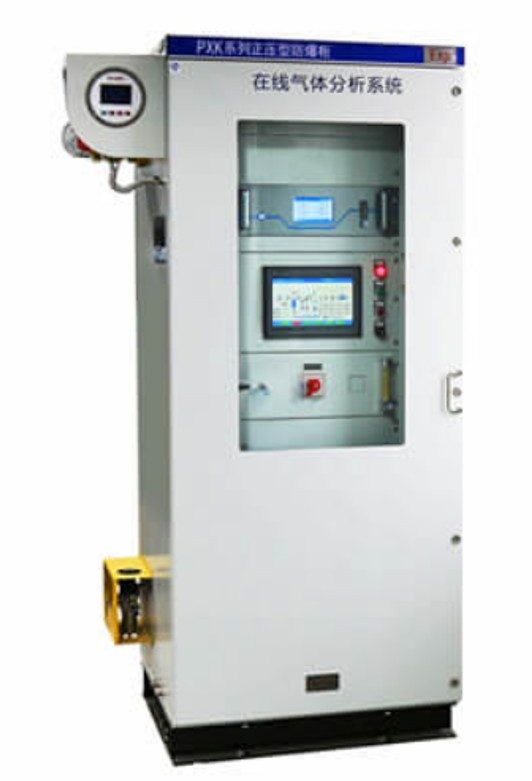
The Mechanism of Operation
- Sample Inlet: Gas enters the Hydrogen Analyzer here. Often found at the device’s front.
- Pressure Regulation: Makes sure gas pressure stays at a stable level. Crucial for accurate readings.
- Filtering System: Removes unwanted particles from the gas. Improves the sensor’s life and accuracy.
- Sensor Interaction: Where the gas interacts with the analyzer’s sensor. Here, measurements happen.
- Signal Amplification: Enhances the sensor’s output. Makes it easier for data conversion.
- Data Conversion: Transforms the raw data into digital format. Vital for readout display.
- Readout Display: The front-facing interface where readings are shown. Important for quick and clear data comprehension.
- Auto Calibration: Automatic adjustment of the sensor to ensure correct measurements. Happens at regular intervals.
- Alarm Activation: Triggers an alarm when hydrogen level crosses a certain threshold. For safety.
- Maintenance Reminder: Alerts the user when maintenance is due. Keeps the device in top shape.
- Output Connection: Where the analyzed data is sent to an external system. Critical for data integration.
- Power Supply: Fuels the device. Usually a DC power source.
- System Check: Checks the system’s health at regular intervals. Essential for reliable operation.
The Role in Modern Industries
- Process Control: Hydrogen Analyzers help control industrial processes. Ensures optimal performance.
- Quality Assurance: They ensure product quality. Detects hydrogen levels in products.
- Safety Monitoring: Critical for detecting hazardous hydrogen levels. Enhances workplace safety.
- Environmental Compliance: They help industries comply with environmental standards. Checks harmful emissions.
- Cost Saving: By detecting leaks, they save money. Reduces wasted resources.
- Efficiency Enhancement: Optimizes processes. Improves overall operational efficiency.
- Maintenance Planning: Alerts help plan maintenance. Reduces unplanned downtime.
- Risk Mitigation: Early detection of hydrogen leaks prevents accidents. Mitigates risks.
- Predictive Analysis: Data from these devices aid in predicting future events. Helps in strategic decision making.
- Product Quality: They ensure the final product is of high quality. Checks the hydrogen content.
- Energy Management: Monitors energy use. Supports efficient energy utilization.
- Compliance Reporting: Data helps in reporting compliance. Assists in meeting legal requirements.
- Production Optimization: Optimizes production processes. Maximizes output.
- Waste Reduction: By detecting leaks, waste is minimized. Supports sustainable operations.
Approaches to Checking the Purity of Hydrogen Gas!
- Chromatographic Analysis: This method separates hydrogen from impurities, determining their respective concentrations.
- Spectrometric Analysis: Spectrometry measures light absorbed or emitted by hydrogen to gauge its purity.
- Thermal Conductivity: Pure hydrogen possesses unique thermal properties. Deviations indicate impurities.
- Electrochemical Analysis: This technique analyzes hydrogen’s electric properties, indicating purity levels.
- Infrared Detection: Certain impurities absorb infrared light. Their presence reduces hydrogen’s purity.
- Mass Spectrometry: By measuring atomic masses, this method detects impurities in hydrogen.
- Optical Sensing: Changes in light behavior due to impurities help assess hydrogen purity.
- Trace Analysis: This method identifies minute quantities of impurities in hydrogen.
- Paramagnetic Analysis: Hydrogen’s magnetic properties change with the presence of impurities. This change helps determine purity.
- Residual Analysis: Detecting residual impurities gives insights into hydrogen purity.
- Gas Purity Meters: These devices measure purity by detecting impurities in hydrogen gas.
- Sampling Protocol: Regular sampling helps monitor hydrogen purity over time.
- Calibration Checks: Regular calibration ensures accurate purity measurement.
- Maintenance Scheduling: Regular maintenance keeps purity measurement equipment in optimal condition.
The Functionality of H2S Analyzers in Hydrogen Analysis!
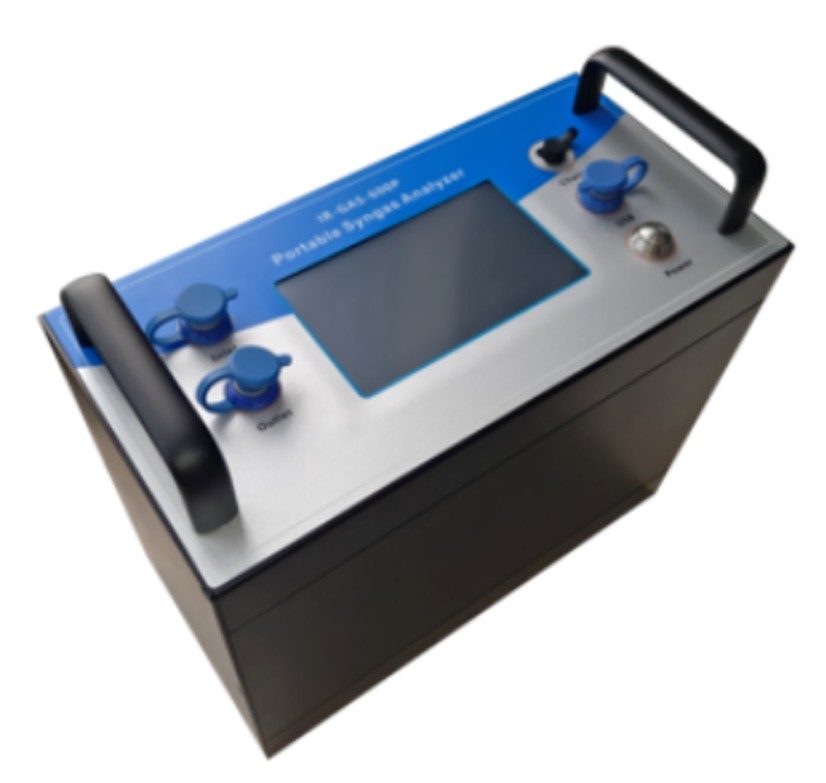
— Detect Impurities
H2S analyzers play a vital role in finding impurities in hydrogen. By doing so, users ensure high-quality, safe operations.
— Safety Compliance
Hydrogen analyzers aid in adhering to safety rules. Thus, they help avoid dangers in various sectors, such as oil and gas.
— Process Control
These devices enable effective control of processes. They measure hydrogen levels, providing crucial information for decision-making.
— Quality Assurance
Through routine checks, hydrogen analyzers ensure consistent quality. They help in maintaining standards in different industries.
— Optimize Reaction
By monitoring hydrogen levels, reactions can be optimized. Accurate measurements lead to more efficient reactions and less waste.
— Corrosion Prevention
Excess hydrogen may cause corrosion in some systems. Hydrogen analyzers assist in preventing this through continuous monitoring.
— Equipment Longevity
Timely detection of issues contributes to longer equipment life. It reduces the risk of unexpected breakdowns, saving on costly replacements.
— Environmental Monitoring
Hydrogen analyzers play a part in environmental safety. They help in tracking hydrogen levels in the atmosphere, aiding in environmental protection efforts.
— Alert System
Built-in alert systems warn of harmful hydrogen levels. Such alerts protect personnel and equipment from potential harm.
— Data Logging
Hydrogen analyzers record data for future reference. These records assist in identifying patterns and predicting trends.
— Output Signal
Analyzers send output signals for control measures. These signals trigger corrective actions when hydrogen levels deviate from the norm.
— Maintenance Scheduling
Regular maintenance ensures analyzers function optimally. Scheduled checks help identify issues early, minimizing potential damage.
— Calibration Routine
Calibration ensures accurate readings. Regular calibration improves reliability and ensures accurate results.
— Performance Assessment
Hydrogen analyzers provide a means to assess system performance. Data collected aids in enhancing efficiency and productivity.
Strategies to Improve Hydrogen Purity in Generators!

— Proper Ventilation
Adequate ventilation reduces the risk of hydrogen build-up. It helps maintain an optimal environment for hydrogen generators.
— Regular Maintenance
Routine maintenance keeps hydrogen generators at peak performance. It minimizes breakdowns and extends the lifespan of the equipment.
— Purity Monitoring
Regular checks of hydrogen purity ensure optimal operation. Hydrogen analyzers aid in this process, providing real-time data.
— Efficient Filtration
Filtration removes impurities from hydrogen. A well-maintained filter system improves hydrogen purity.
— Leak Detection
Regular leak checks prevent loss of hydrogen. Quick detection of leaks saves resources and enhances safety.
— Equipment Upgrade
Upgraded equipment operates more efficiently. It offers improved performance and better hydrogen purity.
— Quality Inputs
High-quality inputs ensure high-quality hydrogen. By choosing quality inputs, the purity of the output hydrogen is assured.
— Pressure Control
Proper control of pressure ensures optimal hydrogen production. It prevents damage to the generator, enhancing its longevity.
— Temperature Management
Temperature affects hydrogen production. Effective temperature management optimizes the process, improving purity.
— Flow Regulation
Controlled flow of hydrogen maximizes efficiency. Regular adjustments ensure consistent hydrogen quality.
— Purge System
Purging helps remove unwanted gases. It contributes to the overall purity of the hydrogen produced.
— Sealing Inspection
Inspecting seals for leaks prevents hydrogen loss. It helps maintain the integrity of the generator, assuring the quality of hydrogen.
— Advanced Catalysts
Utilizing advanced catalysts improves hydrogen production. These substances speed up the reaction, resulting in purer hydrogen.
— Professional Training
Trained personnel can handle hydrogen generators more effectively. They ensure optimal operations, contributing to improved hydrogen purity.
Conclusion
Having explored the science and functionality of Hydrogen Analyzers, the knowledge gained underscores their industry significance. Further learning awaits at ESEGAS, a leading source for these essential devices. Utilize this newfound understanding to make informed decisions in the industry world.





